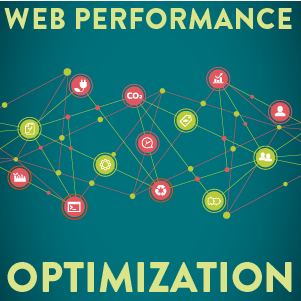Index Surge: Amplifying Your Insights
Stay updated with the latest trends and news across various industries.
Speed Demons: How to Make Your Website Fly
Unlock the secrets to supercharge your website! Discover expert tips to make your site lightning-fast and impress your visitors today!
10 Essential Tips for Optimizing Your Website's Speed
Website speed is a critical factor in enhancing user experience and improving your site's search engine rankings. To ensure your website performs optimally, implementing essential speed optimization techniques is vital. Here are 10 essential tips to help you achieve a faster loading time:
- Optimize Images: Compress images without sacrificing quality to reduce their loading time.
- Minify CSS and JavaScript: Remove unnecessary characters from your code to decrease file sizes.
- Use Browser Caching: Enable caching to store frequently accessed files on users' devices.
- Choose Fast Hosting: Select a reliable hosting service that offers fast server response times.
- Implement a Content Delivery Network (CDN): Distribute your content across multiple servers to enhance delivery speed.
- Reduce Redirects: Limit the number of redirects to save time during the loading process.
- Enable Gzip Compression: Use Gzip to compress files for faster transfer rates.
- Optimize Your Database: Regularly clean and optimize your database to ensure efficient data retrieval.
- Limit HTTP Requests: Combine files and scripts where possible to decrease the number of requests.
- Prioritize Above-the-Fold Content: Load critical content first to improve perceived load time for users.

The Impact of Loading Times on User Experience and SEO
Loading times have a significant impact on user experience and search engine optimization (SEO). Research shows that users have little patience for slow-loading pages; in fact, a delay of just a few seconds can lead to increased bounce rates and a decline in user engagement. This means that if your website takes too long to load, visitors may leave before even seeing your content, which can adversely affect your site's overall performance in search engine rankings. For instance, Google considers page speed as a ranking factor, making it crucial for website owners to prioritize optimal loading times.
Moreover, the correlation between loading times and user satisfaction cannot be overstated. A fast-loading website not only enhances user retention but also encourages them to explore more content, leading to longer session durations and higher conversion rates. To improve loading times, consider implementing strategies such as compressing images, minimizing HTTP requests, and utilizing browser caching. By making these adjustments, you can create a superior user experience that satisfies both visitors and search engines alike.
Is Your Website Slow? Common Causes and How to Fix Them
Is your website slow? A sluggish website can significantly affect user experience and SEO rankings. There are several common causes of slow loading times, including:
- Large Images: Unoptimized images can take up a lot of bandwidth, leading to longer loading times.
- Too Many HTTP Requests: Each file that needs to be loaded—CSS, JavaScript, images—adds to the load time.
- Server Issues: If your hosting service is unreliable or has slow performance, it can slow down your website.
Identifying the cause of your website's slowness is the first step toward fixing the issue.
To fix your slow website, consider implementing these strategies:
- Optimize Images: Use image compression tools to reduce file size without losing quality.
- Minimize HTTP Requests: Combine CSS and JavaScript files to reduce the number of requests the server must handle.
- Upgrade Your Hosting Plan: If your current hosting solution isn't keeping up with your traffic, consider switching to a more reliable plan.
By addressing these areas, you can significantly improve your website's loading speed and provide a better experience for your visitors.